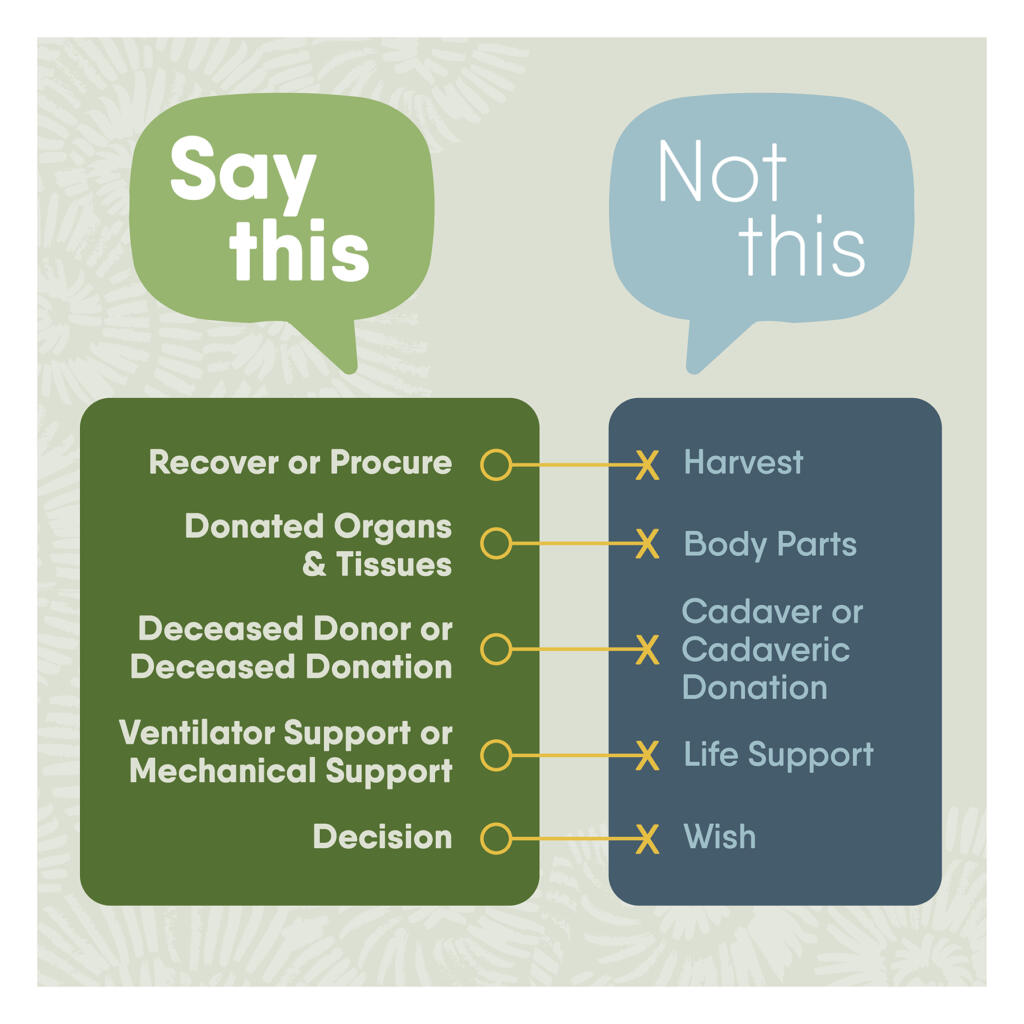Donation Essentials Blog
Expanding the Impact of Bone Marrow Transplants
Bone marrow transplants, also known as a stem cell transplant, are sometimes the only line of treatment for patients facing blood cancers and other diseases. Especially diseases that compromise the body’s ability to produce healthy blood cells. Replacing damaged or diseased bone marrow with healthy stem cells restores the body’s ability to generate red blood cells, white blood cells, and platelets. These are essential for treating more than 75 diseases, including multiple types of leukemias, lymphomas, and other blood disorders.
Previously, living donors were the only means for obtaining a bone marrow transplant, relying on individuals registering themselves as donors. Registered donors had to order a cheek swab kit, submit their results, and enter a donor registry database where a match could potentially be found for a patient in need.
Now, thanks to a pioneering partnership between Donor Alliance and Ossium Health, the potential for bone marrow donation has expanded. This collaboration allows recovery of bone marrow from organ and tissue donors, expanding the donor pool beyond living donors and giving more people hope, including those suffering from blood diseases.

What is a Bone Marrow Transplant?
Bone marrow, located within the bones, produces stem cells that develop into blood cells. Red blood cells carry oxygen. White blood cells fight infection. While platelets control bleeding. Blood diseases can compromise bone marrow, leaving the body unable to sustain healthy blood cell production.
A bone marrow transplant infuses a patient with healthy stem cells, which can take over the function of producing vital blood cells. This is especially critical for patients undergoing aggressive treatments like chemotherapy, which can damage their bone marrow. A bone marrow transplant is a highly effective treatment, and for many, it’s the only curative option.
Who Needs a Bone Marrow Transplant?
For many people with blood-related illnesses, a bone marrow transplant isn’t just an option—it’s the only path to survival. These include:
- Leukemia – A cancer of the blood and bone marrow
- Lymphoma – A cancer of the lymphatic system
- Multiple myeloma – A cancer of plasma cells
- Severe aplastic anemia – Where bone marrow stops producing enough new blood cells
- Inherited immune and metabolic disorders – Such as sickle cell disease or Hurler syndrome
Tens of thousands of patients receive transplants each year in the U.S., and many more are waiting to find a match.
Types of Bone Marrow Transplants
There are two main types of bone marrow transplants:
- Autologous Transplant: In an autologous transplant, doctors collect and store the patient’s own stem cells before treatments like chemotherapy. This approach helps eliminate concerns about donor compatibility since there’s no risk of rejection or mismatch. For this approach, the body must be producing enough healthy bone marrow cells that can be gathered, frozen, and preserved for future use.
- Allogeneic Transplant: This type of stem cell transplant involves using healthy blood stem cells from a donor. It replaces bone marrow not producing enough healthy blood cells. The stem cells can be collected from the donor’s blood, bone marrow within the hipbone, or from a donated umbilical cord. Matching the donor cells is critical to reduce the risk of complications and rejection.
Where Do the Stem Cells Come From?
Stem cells for transplants can be collected in several ways:
Bone marrow (traditional method): This method involves collecting cells from inside the back of the pelvic bone while the donor is under anesthesia. It’s a surgical procedure, typically done in a hospital. Donors usually recover within a few days, and for many, the decision is driven by the hope of helping someone they’ll never meet.
Peripheral blood stem cells (PBSC): PBSC donation is currently the most common method. Donors receive a medication that increases stem cells in their bloodstream. After a few days, the cells are collected through a non-surgical blood draw, similar to donating plasma. Most donors return to daily activities shortly afterward.
Cord blood: After a baby is born, the blood left in the umbilical cord and placenta contains useful stem cells. With a parent’s consent, this blood can be collected and stored for future transplants. It’s especially valuable for pediatric patients.
Organ and tissue donors: Thanks to a collaboration between Donor Alliance and Ossium Health, stem cells can also be recovered from deceased organ and tissue donors. These cells are stored and made available for patients who haven’t found a match through traditional search methods. It’s another way a single donor can help more than one life.
Every method is medically managed and guided by a shared goal: giving someone a better chance at survival. These contributions may come from parents, volunteers, or families honoring a loved one—and every one makes a difference.
The Role of Donor Registries and Matching
Matching donors to transplant recipients is crucial, particularly for allogeneic transplants. Registries like NMDP (formerly Be the Match) help connect patients with suitable donors. They often focus on younger donors (typically between 18-40 years old) due to their stem cells’ higher effectiveness.
Matching is based on human leukocyte antigen (HLA) markers—proteins on the surface of cells that help the immune system recognize which cells belong in the body. The closer the HLA match, the lower the risk of complications.
However, finding a match isn’t always easy, especially for those from diverse ethnic backgrounds. Increasing donor diversity remains a critical goal for improving transplant success rates for underrepresented communities.
Innovative Cell Recovery Through Organ Donation
The partnership between Donor Alliance and Ossium Health is a big step forward in bone marrow transplants. Together, we are finding new ways to make organ and tissue donations go even further through bone marrow. This means more people will have a chance to find the match they need for lifesaving treatment. By combining bone marrow transplants with organ and tissue donation, they are giving hope to more people and saving and healing more lives.
“Through our collaboration with Ossium Health, Donor Alliance is proud to extend the gift of life beyond traditional organ donation. By facilitating bone marrow recovery from deceased donors, we’re opening new avenues for patients in need of stem cell transplants.”
— Donor Alliance
Why it matters: This approach allows stem cells to be recovered from deceased donors and stored for future use. For patients who cannot find a match through a registry, these preserved cells may offer the only viable path to treatment. It’s a breakthrough that maximizes each donor’s life-saving gift.
Donor Alliance’s Role in Advancing Bone Marrow Donation
Donor Alliance is a federally designated organ procurement organization serving Colorado and Wyoming. As part of our mission to save lives through organ and tissue donation, we have expanded our impact by collaborating with innovative partners like Ossium Health.
Through this partnership, Donor Alliance:
- Identifies potential bone marrow recovery opportunities from deceased donors
- Coordinates with transplant centers to match and deliver preserved stem cells
- Ensures ethical, respectful handling of every donation
- Helps transform a single donor’s gift into multiple life-saving outcomes
This work reflects our commitment to honoring the generosity of donors and meeting the urgent needs of patients waiting for a second chance.
How the Transplant Process Works
Here’s a general overview of the transplant process:
- Evaluation: The patient is evaluated to confirm whether a transplant is appropriate and what type is needed.
- Donor Matching: For allogeneic transplants, a search is conducted for a compatible donor based on HLA markers.
- Stem Cell Collection: Donor cells are gathered using one of the approved collection methods.
- Conditioning Treatment: The patient undergoes chemotherapy or radiation to destroy diseased marrow.
- Stem Cell Infusion: Healthy stem cells are infused through an IV, similar to a blood transfusion.
- Engraftment: The new cells travel to the bone marrow and begin producing new blood cells.
- Recovery: Close monitoring follows. Patients may stay in the hospital for several weeks, but long-term survival and quality of life can be excellent with proper care.
Typical Recovery Timeline:
- Weeks 1–2: Hospital monitoring for complications and signs of engraftment.
- Weeks 3–6: Blood counts improve; patients may begin outpatient care.
- Months 2–6: The immune system rebuilds, and patients often return to daily life.
- Months 6–12+: Ongoing checkups continue, and many people regain full strength.
Each patient’s experience is different. Some recover quickly, while others face complications. But with strong support and close medical care, many go on to live long, healthy lives.
Risks and Recovery
Bone marrow transplants aren’t easy. They involve intense treatments and the possibility of serious side effects. But for many patients, they also represent a chance to start over—free from disease.
- Infections. When the immune system is temporarily wiped out, even minor germs can become dangerous.
- Graft-versus-host disease (GVHD). In some cases, donor cells may attack the patient’s body. This risk exists in allogeneic transplants.
- Organ damage. Some chemotherapy drugs can affect the liver, lungs, or heart.
- Delayed engraftment. If the new cells don’t take hold quickly, the patient may need additional treatment.
Despite these risks, many patients go on to live full, healthy lives. Success depends on many factors: the underlying disease, the patient’s age and overall health, the quality of the donor match, and the care provided during recovery.
Common Myths About Bone Marrow Donation
- “It’s painful.” Most people assume donation means surgery and pain. In reality, the most common method—PBSC donation—is usually no more uncomfortable than giving plasma. Bone marrow donation does involve anesthesia and some soreness, but donors are up and moving soon after.
- “I’ll get sick if I donate.” This is a common worry, but it’s not how the body works. Donors naturally replace the donated stem cells within a few weeks. Long-term health effects are extremely rare.
- “I have to be related to donate.” Not true. In fact, most matches come from unrelated donors found through national registries like NMDP. That’s why it’s so important for more people to sign up.
- “Organ donors can’t donate bone marrow.” Thanks to advances in recovery and preservation, including Donor Alliance’s work with Ossium Health, stem cells from organ and tissue donors can absolutely be used to help transplant patients.
Ethical Oversight and Trust in the Process
Every donation—whether it comes from a living volunteer or a deceased donor—is handled with deep care and responsibility. Here’s how the process stays ethical, respectful, and transparent:
- Donors and families give fully informed consent
- Every step is overseen by federal health agencies, including the FDA and HRSA
- Recovery and transport are handled professionally and securely
At Donor Alliance, we treat each donation as an act of generosity. It’s our job to honor that gift by ensuring it’s used safely, ethically, and in ways that bring the most healing.
If Your Loved One Was a Donor
If someone in your family said “yes” to donation, their gift might live on in ways you didn’t expect. Through our partnership with Ossium Health, a single donor can now help not just one person, but several—especially those waiting on a bone marrow match they couldn’t find anywhere else.
We care for every donation like it’s our own family. Your loved one’s legacy may include giving a cancer survivor a second chance, helping a child regain their immune system, or simply allowing someone to live with hope again.
Why It All Matters
When we talk about transplants, it’s easy to focus on the medicine. But at its heart, this is about people:
- A teenager with leukemia who just wants to go back to class
- A mom hoping to see her son graduate
- A patient who thought all their options were gone, until a match came through
These are the stories that keep us going. They’re why every “yes” matters.
Learn More or Get Involved
If you’re inspired to take action, here’s how to start:
- Join the NMDP Registry:https://www.nmdp.org/
- Register as an organ and tissue donor in Colorado: https://www.donatelifecolorado.org
- Register in Wyoming: https://www.donatelifewyoming.org
- Learn more about Ossium Health’s innovations: https://www.ossiumhealth.com
Frequently Asked Questions
How do I join the bone marrow donor registry?
Visit NMDP and follow the steps to register. You’ll receive a cheek swab kit in the mail.
Is bone marrow donation the same as stem cell donation?
They both involve hematopoietic stem cells. The difference is in how the cells are collected—either from bone marrow or from the bloodstream.
Can organ donors also donate bone marrow?
Yes. With new technology and partnerships, stem cells from deceased organ donors can now be recovered and stored for transplant.
What are the risks to donors?
Most donors report minimal side effects. PBSC donors might feel flu-like symptoms for a few days. Bone marrow donors may have soreness near the hip area, but serious complications are rare.


